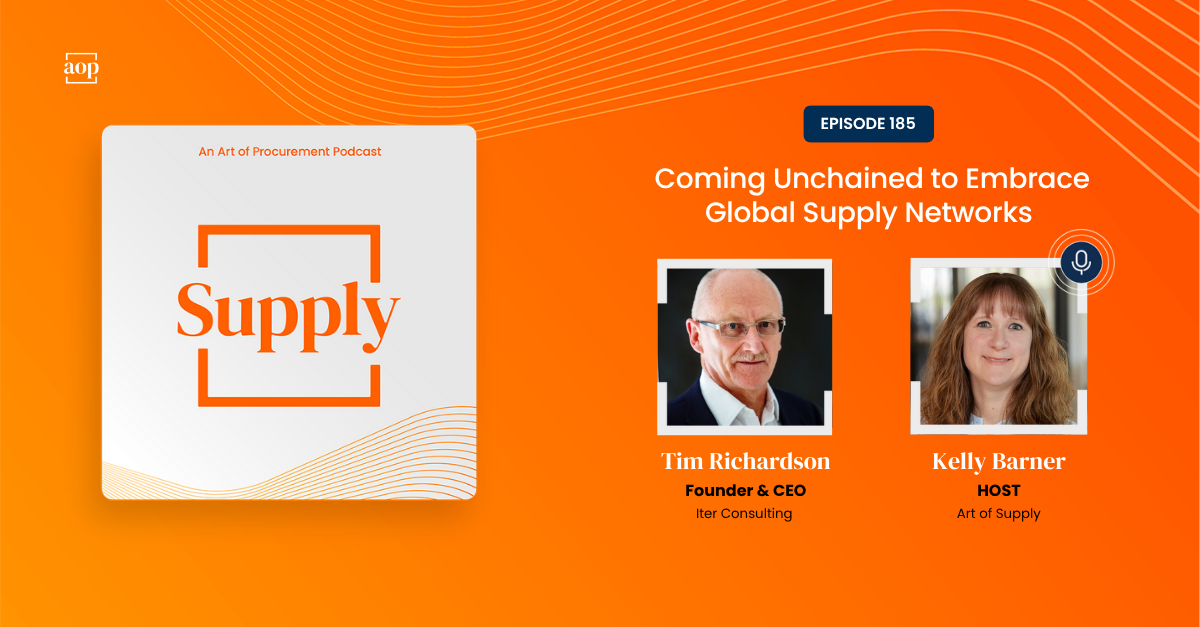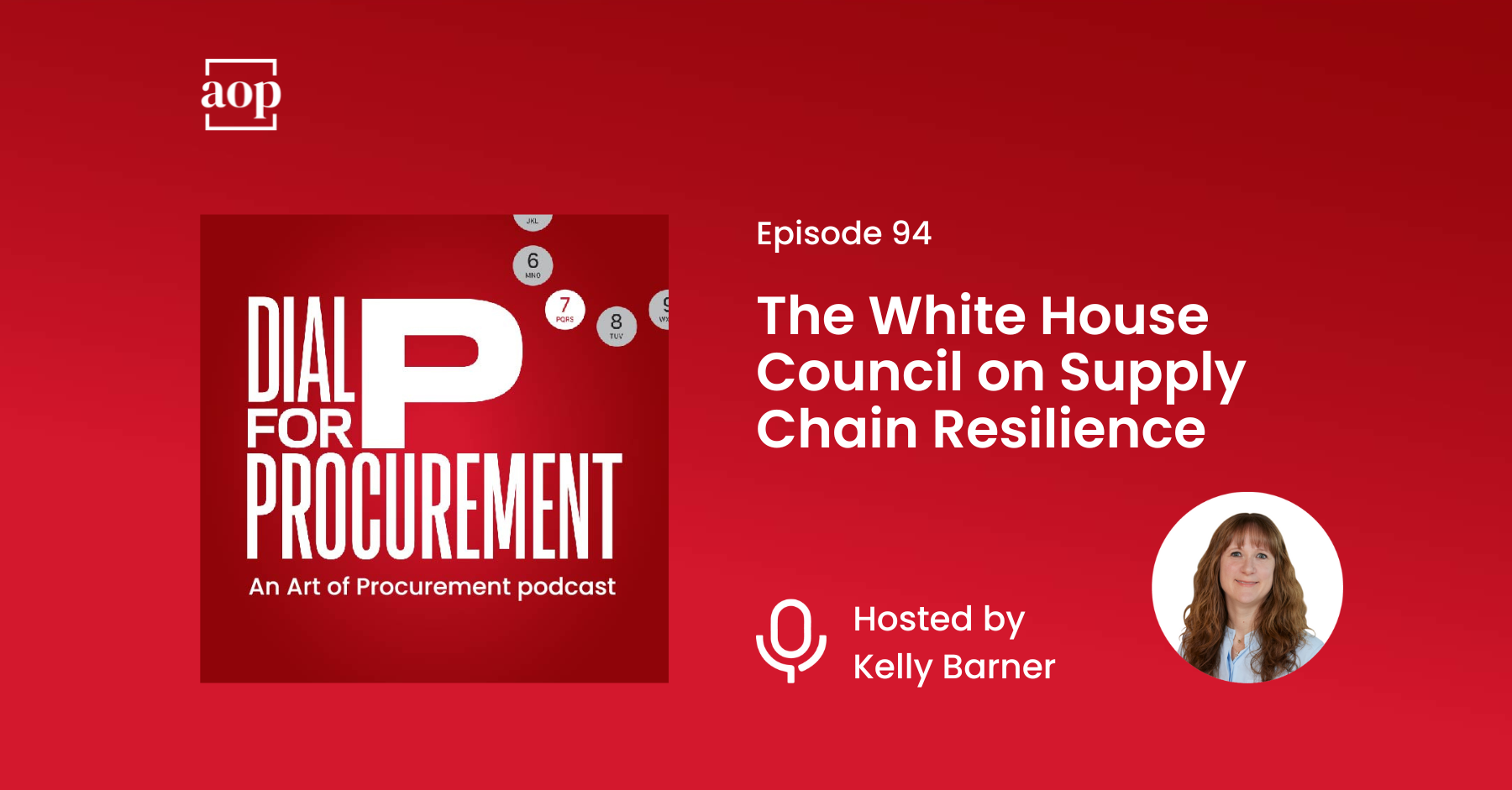5 min read
Weight and Value x Distance: Studying Global Supply Chain Use and Cost
Kelly Barner : January 25, 2024

In June 2023, the Journal of Economic Perspectives published a paper titled “How Far Goods Travel: Global Transport and Supply Chains from 1965-2020.” The paper takes a new and compelling look at global transportation.
The paper was written by Sharat Ganapati, Assistant Professor of International Economics at Georgetown University and Faculty Research Fellow at the National Bureau of Economic Research, and Woan Foong Wong, Assistant Professor of Economics at the University of Oregon.
Ganapati and Wong’s premise is that unlike traditional trade metrics, which often fail to reflect the role of distance, it is essential to examine transportation usage worldwide by weight and value as well as distance.
In this episode of the Art of Supply podcast, I take on the rewarding challenge of digesting the key findings expressed in this highly relevant academic paper.
Overview: Understanding Transport Costs in a Global Age
As Ganapati and Wong point out, “In the age of globalization and low transport costs, a vertically integrated factory in a high-cost location no longer made financial sense.”
Distant as it might seem from our point of view in 2024, the story of today’s supply chains dates back 70 years. This is when transportation made it possible to optimize the sourcing and manufacture of materials and components by labor cost rather than consumption.
Once a company in one industry or sector started optimizing around lower cost transport, the whole model changed. All of their competitors had to do the same in order to keep up. Before long, entire economies were being altered to take advantage of global capabilities and markets.
Ganapati and Wong’s paper digs deep into four areas:
- The huge increase in global transport from 1965-2020
- How much transport costs have decreased during that time
- How significantly lower costs led to transport use increases
- Relevant advancements in technology and infrastructure, and how their findings apply to the goal of increasing supply chain efficiency and resilience
Section 1: Transport Use Over Time
Traditional measures of trade fail to capture and reflect the role of distance.
If we only look at the amount of goods being transported, we might just be capturing increased trade between two countries that are near each other. If, however, we include distance in our measures, we can also reflect the fact that more transportation services are required to move the goods – even if the weight or value of the goods is the same.
Ganapati and Wong look very closely at the differences between weight and value in their paper. Although most transportation costs are priced based on weight or volume, factoring in value allows us to make connections to global economic conditions.
Some goods, such as commodities and raw materials, continue to be best represented by weight. Examples include grain, coal, and petroleum products. In this case, transportation costs are calculated by multiplying weight or volume times distance.
Another way of looking at transportation costs is by looking at the value of the goods being shipped. This approach is more appropriate with manufactured goods, like consumer electronics or cars.
When Ganapati and Wong compared transport usage by weight and transport usage by value, they found some interesting differences.
- When weight (or volume, I presume) is the measure, transport usage increased 10X over the period studied
- But when value is the measure, transport usage increased 14X
Intermediate production and transportation are included in this analysis, as well as transportation to the final destination. What we gain by this is an understanding of how staged production impacts transport use.
For example, the raw materials for a smartphone come from all over the world, and assembly is done in stages. Chips, electronics, the screen, etc. are made. Increasingly assembled parts of the phone move around the world as they get closer to becoming a full and usable phone available for sale to a consumer.
When transportation costs decrease, it makes moving products and materials further an economic possibility. Weight-based transport use doubled during the 50-year window, while value-based transport tripled.
When looked at in relation to the global economy, the same weight of goods is being shipped – but they are going much further distances. This trend was largely unaffected by the global recession of 2008-2009, although the value of goods being shipped plummeted after the recession, dropping 20 percent from the peak in 2008.
The main takeaway of the first part of the paper is that we have to separate weight transported from value transported to understand what is truly going on with international trade.
If we just look at transportation usage by weight and distance, it looks as though trade should be unchanged, but if we look at transportation usage by the value – NOT the weight – of the goods shipped, a very different story emerges. Trade is reduced, although pure transportation shows a small growth or remains largely the same.
Section 2: Transport Costs Over Time
While the available data does not make this easy, Ganapati and Wong added up all transportation costs for each year and divided them by either the weight or value of the goods traded before multiplying by distance.
What they found is that global transportation costs declined significantly from 1965 to 2014, thanks to increased productivity and advances in technology.
- Weight-based costs declined by 33-39 percent
- Value-based costs declined by 48-62 percent
If we apply these findings back to our previous examples, the cost to ship coal, for example, fell by about a third, while the cost to ship iPhones and iPhone assemblies fell by half to two-thirds. Those kinds of changes would completely transform how a global manufacturing process is optimized.
Even with the increased use and distance of transportation, overall spending on transportation is down. Companies are also less likely to try to put production facilities near their end consumers than they were in the past – especially when we look at international markets.
Applying the Findings
To put these findings into a global economic perspective, Ganapati and Wong did an interesting experiment.
They removed China’s economy from their calculations – both their exports and their imports. It is hypothetical, of course, but why not? It is an excellent, and data-driven, opportunity to consider what global trade would look like without China.
The data doesn’t show much of anything until the late 1990s. Then we see two very interesting things:
- Transportation use by weight with China in the calculations increased 29 percent from 1990 to 2020
- Without China, transport use fell by 9 percent
Transportation usage by value fell as well, although not by nearly as much – about 18 percent, approximately half of the fall-off seen with weight-based measures of transport use.
As Ganapati and Wong explain, this illustrates a couple of parallel dynamics. China started exporting more high-value, low-weight goods starting in the 1990s. At the same time, global demand for high-value, low-weight goods began to plateau.
They also looked at the distances goods traveled by weight and value – not relative to China, but overall. Generally speaking, all goods are going further, whether raw or finished, but heavy, low-value goods are being transported longer distances. Light, high-value goods are being transported both longer and shorter distances. They are zigzagging across the globe as they go from raw materials to components to finished goods to consumers.
When we look at use of transportation by weight-based materials compared to value-based manufactured goods, we see another striking difference. Manufactured goods transportation use grew by 135 percent, while raw materials only increased by 6 percent. And yet, those raw materials go into nearly everything manufactured. We should not take their availability, accessibility, or landed cost for granted.
Analysis like that done by Ganapati and Wong is complex and challenging, but conducting it – and studying it – is essential for a data-driven understanding of the conditions driving today’s supply chain strategies.
Links:
- Read: How Far Goods Travel: Global Transport and Supply Chains from 1865-2020
- Kelly Barner on LinkedIn
- Art of Supply LinkedIn newsletter
- Art of Supply on AOP
- Subscribe to This Week in Procurement




